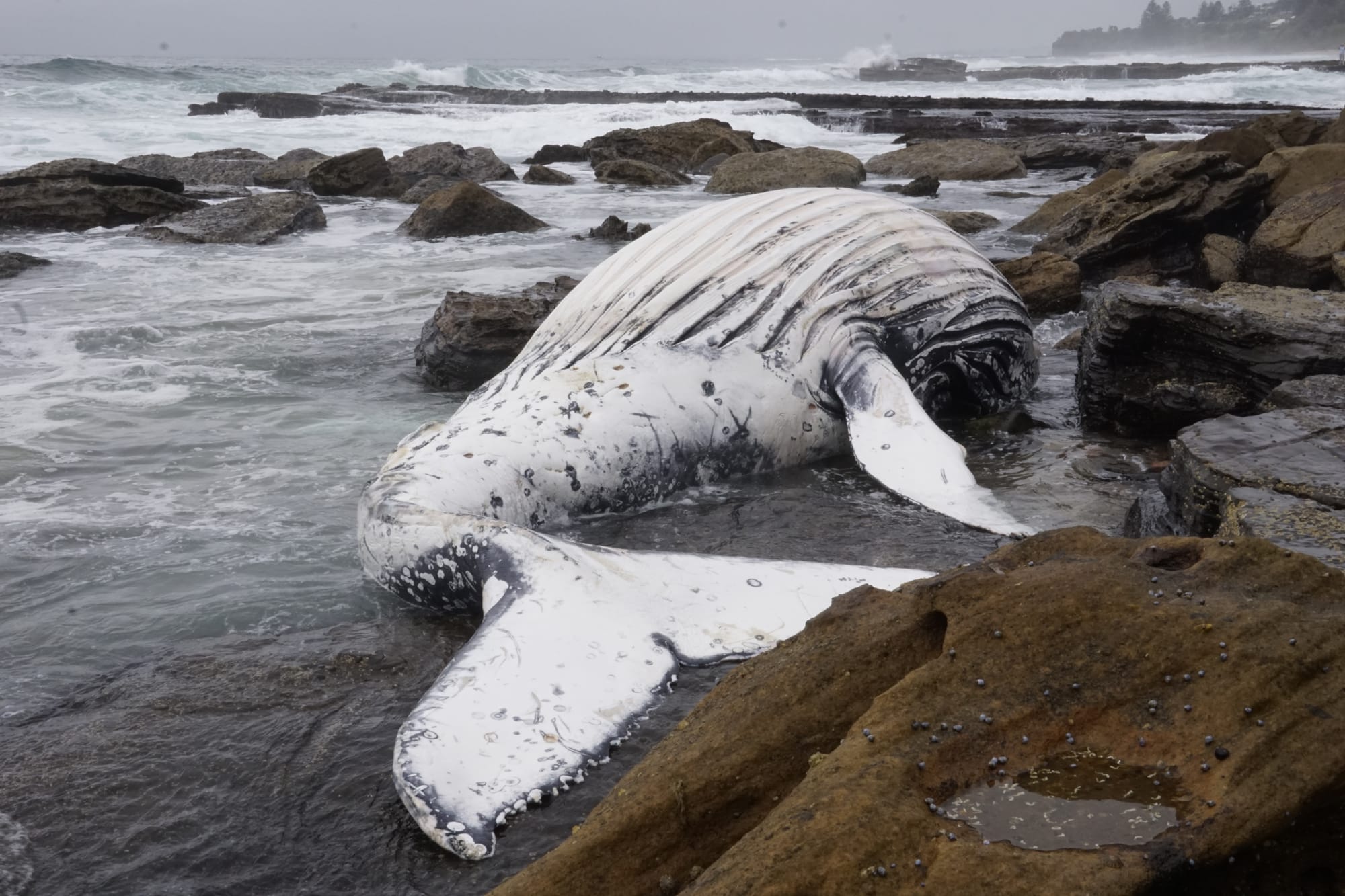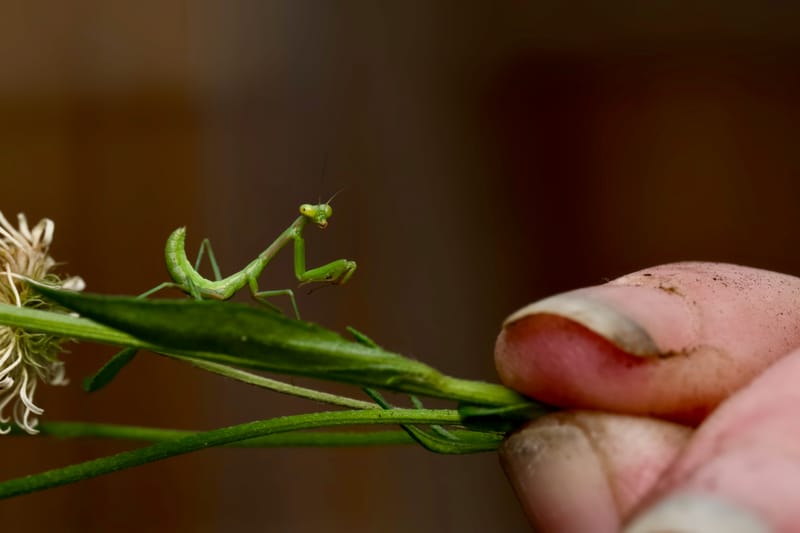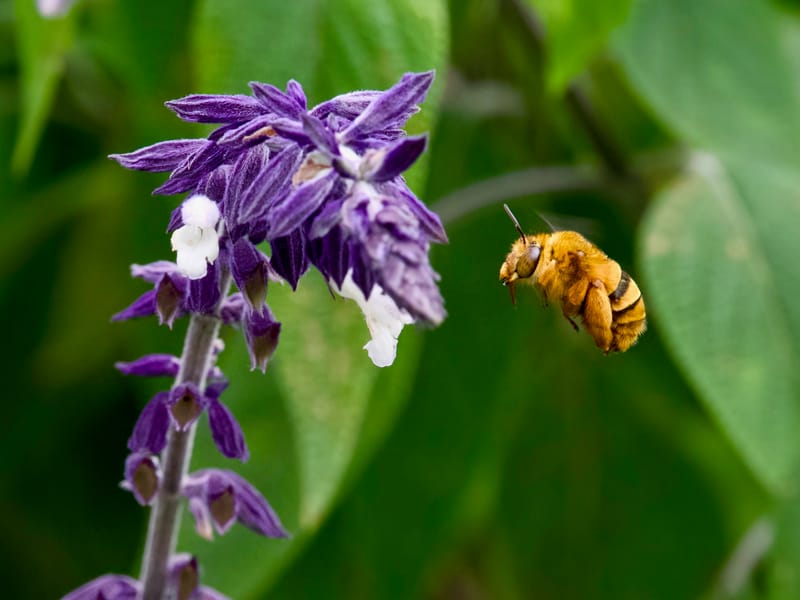Nets drowned whale, now investigation may shine light on ocean pollution
After Friday’s necropsy, scientists may learn more about how human-made hazards – such as polluting ‘forever chemicals’ – are affecting marine mammals and the ocean
NSW State Government shark nets probably caused last week’s drowning of a juvenile humpback whale off our coast. Now, after Friday’s necropsy at Wollongong’s Whytes Gully waste centre, scientists may learn even more about how human-made hazards – such as polluting ‘forever chemicals’ – are affecting marine mammals and the ocean.
“Preliminary findings indicate the most likely cause of death was drowning from entanglement in shark netting,” a spokesperson for Taronga’s Australian Registry of Wildlife Health has confirmed.
“The necropsy also found that the animal had a high parasitic load and reduced body condition. While complete necropsy test results may take some weeks to come back, these findings will help provide data for multiple scientific organisations and potential future analyses.”
The University of Wollongong’s Dr Katharina Peters, research leader of the Marine Vertebrate Ecology (MAVE) Lab, was part of Friday's investigating team, which included Taronga veterinarians, Macquarie Uni researchers, and UOW students.
“The animal was a juvenile male, 8.45 metres long and weighing 4.66 tonnes,” Katharina told the Illawarra Flame yesterday. “Based on its length and the fact that most calves are born in June-August, it would have likely been around 12-14 months old and in the process of being weaned and becoming independent, making it a juvenile rather than a calf.”
Humpbacks grow to a maximum of about 16m. Each year, from April to November, the whales migrate from their krill-rich feeding grounds in Antarctica to the subtropical waters off Australia’s east coast, where they mate and give birth. It’s a round trip of about 10,000km.
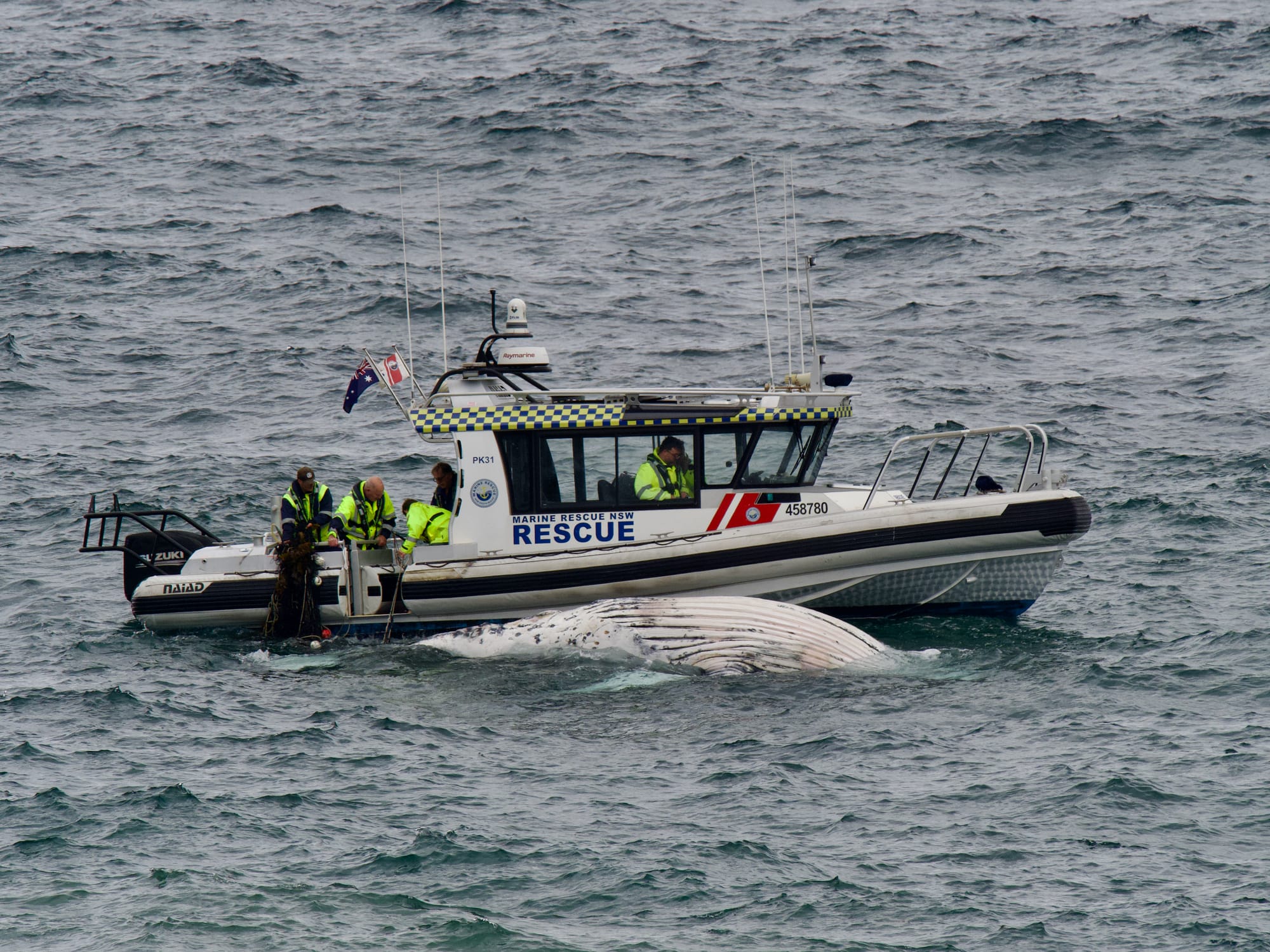

Marine Rescue were part of the multi-agency response; the humpback later washed ashore at Scarborough. Photos: Amanda De George and Lynne Tuck @urchin.creations
Outcry over controversial program
The juvenile humpback was found with netting around its tail fluke and pectoral fin, floating upside down near Coledale, which is one of five Wollongong beach with nets as part of the NSW government's Shark Meshing Bather Protection Program (the other nets are at Austinmer, Thirroul, North Wollongong and Wollongong City Beach). Initial retrieval attempts failed and the carcass washed ashore, before finally being towed to Bellambi boat ramp on Thursday for transportation via truck to council's waste depot at Kembla Grange.
Social media was awash with debate about the effectiveness of the government’s program. Some called for “Nets out now”, while others deplored the indignity of the tip as a final resting place for the juvenile giant, which had been heading south to Antarctica.
“I understand that people may feel this, but it is important to keep in mind that this is a very large carcass of a wild animal which could carry diseases that might affect humans,” Katharina said.
“The first priority is people’s safety, which means it needs to be buried somewhere inaccessible to the public and deep enough so it cannot be dug up by animals at night, and where it cannot contaminate ground water. For these reasons, the Wollongong Waste and Resource Recovery Park is a sensible choice.”

Necropsy could reveal ocean pollution
Originally from Germany, Katharina moved to Australia to study at Flinders University and her postdoctoral positions have included working New Zealand’s Massey University, where Professor Karen Stockin trained her in the complex task of performing a necropsy on a marine mammal.
“With large animals, this can be quite a process,” Katharina said.
“A necropsy on a large marine mammal involves a few things: at first, we take a range of measurements and assess the external condition of the animal, including whether it has any scars, lesions and external parasites. Then we remove some of the blubber (fat) layer to make an incision and inspect the internal organs. We take different tissue samples, for example skin, blubber, muscle, liver and kidney, potentially many more, depending on how fresh the animal is.
“The samples that are collected are stored at the Australian Registry of Wildlife Health, where they will be accessible to researchers.”
Katharina – who founded the Marine Vertebrate Ecology Lab (MAVE Lab) in 2023 – hopes to learn about how whales are coping with the per-and poly-fluoroalkyl substances (PFAS) often called ‘forever chemicals’, found in products such as firefighting foam, cleaning solutions and shampoo.
“I will include the liver sample from this whale in a study looking at PFAS levels in Australian whales and dolphins, which will give us an indication on PFAS pollution in our marine environment,” Katharina said.
“We will know more about the outcome next year.”
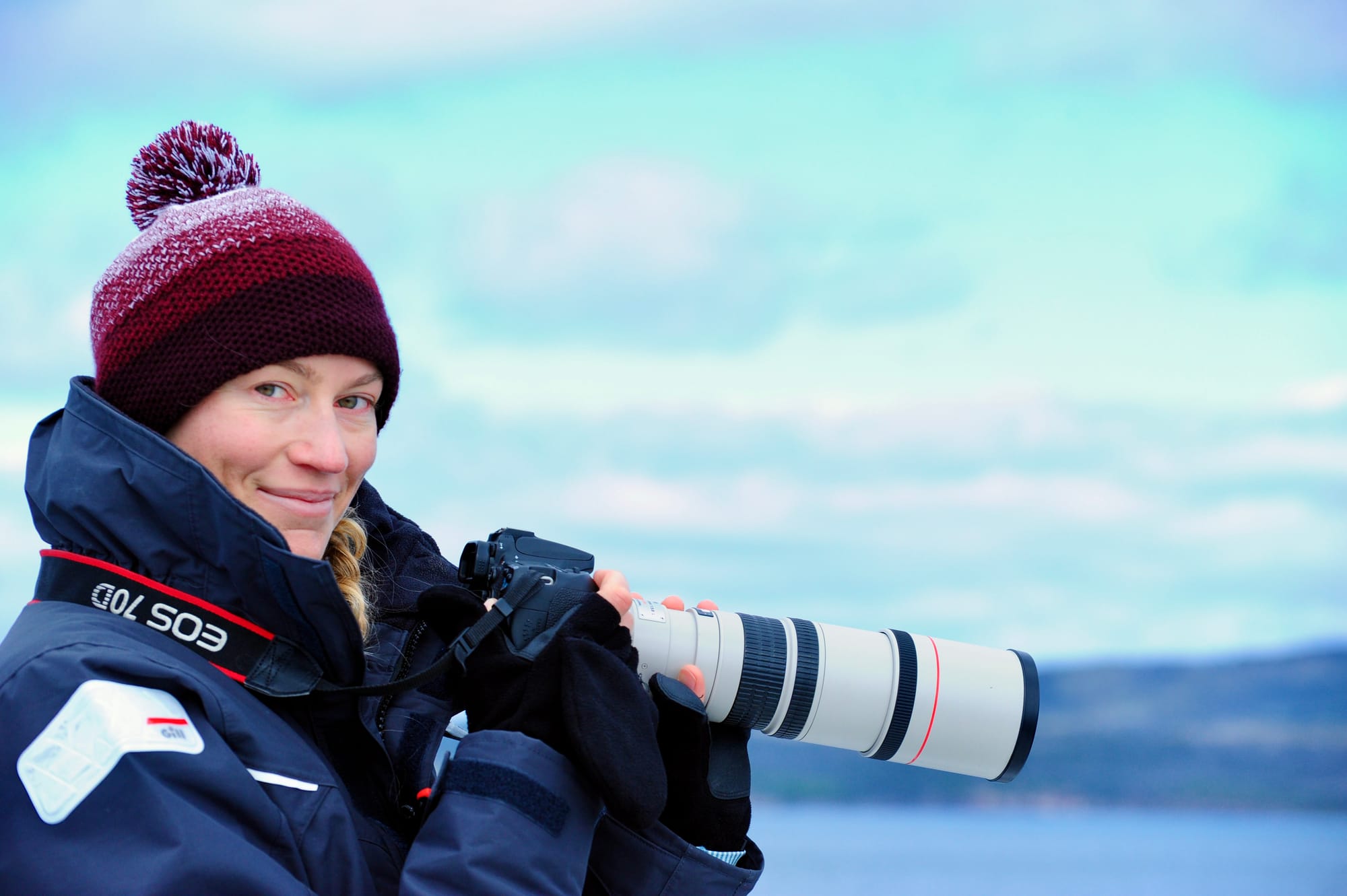
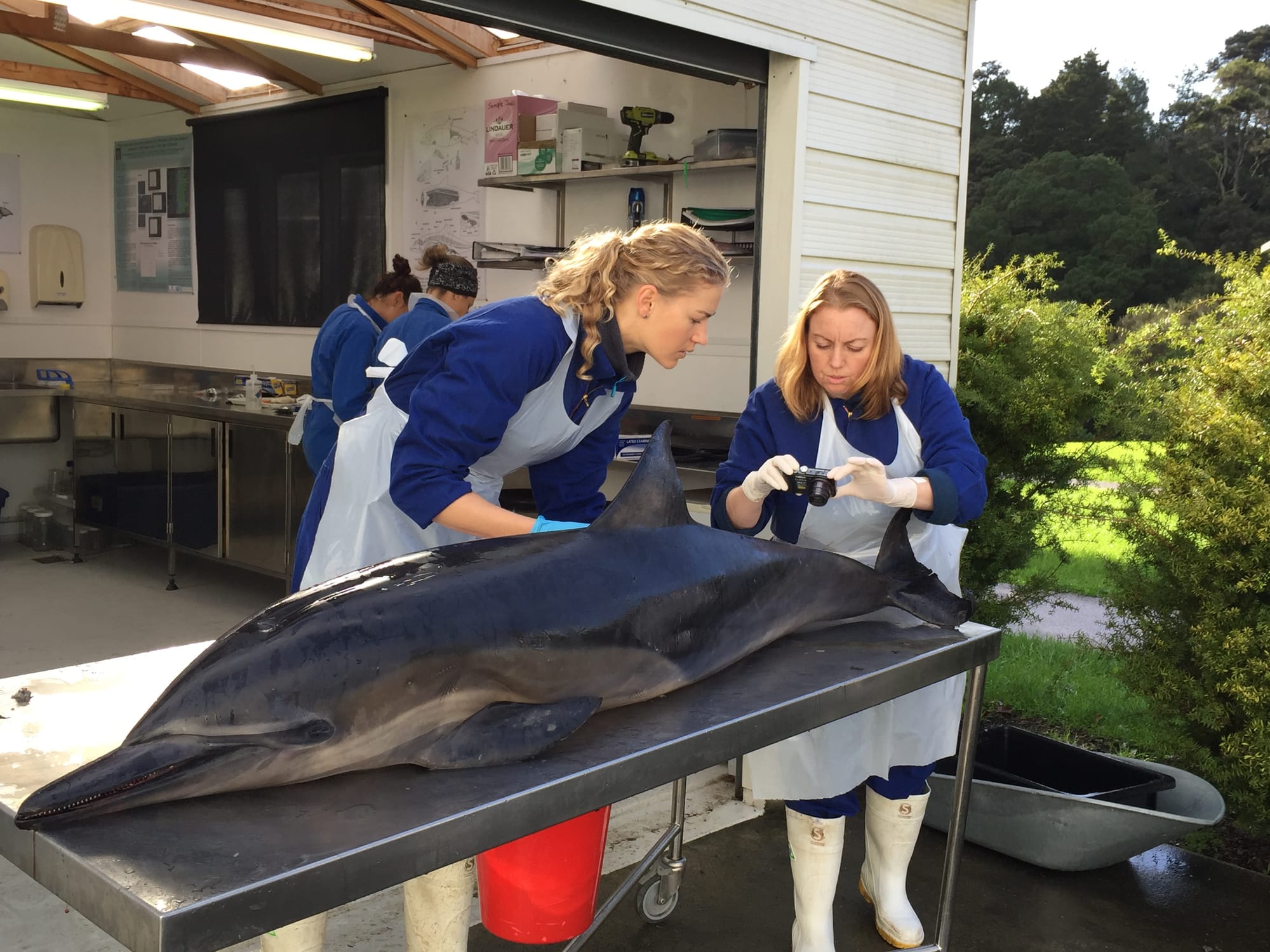
UOW's Dr Katharina Peters; at right, with Prof Karen Stockin examining a stranded and deceased common dolphin in preparation for a necropsy. Photos supplied
Debate continues, with nets in place until March 31
The first whale death in a NSW Government shark net in more than a decade has made national news, with headlines ranging from a ‘Devastating find' on News.com.au to ‘Animal cruelty’ in the Guardian.
“Encounters between sharks and humans are rare and largely unpredictable, and studies haven’t shown that shark nets actually make people safer,” Katharina said.
“What we do know is that these nets regularly trap and kill sharks, turtles, and marine mammals. So, we have to ask ourselves – is it worth sacrificing so much marine life for a measure that may not even be effective?”
On Friday, the Member for Heathcote, Maryanne Stuart, thanked all those involved in last week’s joint-agency response, including Wollongong City Council, National Parks, Marine Rescue and ORRCA.
“This is a tragic incident that has been really distressing for our community,” Maryanne said.
“I wish to thank all those involved in this joint-agency response, including the Council, National Parks, Marine Rescue and ORRCA.
“The Department of Primary Industries and Regional Development has advised me that the 51 shark nets in NSW are fitted with acoustic ‘whale alarms’ and ‘dolphin pingers’, which are designed to deter cetaceans away from the nets.
“The shark nets will be removed on 31 March 2026 to avoid much of the whale migration season and increased turtle activity in April.”
If you see a marine mammal in trouble, report it to National Parks and Wildlife Service on 13000 PARKS (1300 072 757) or the Organisation for the Rescue and Research of Cetaceans in Australia (ORRCA) on 02 9415 3333.

